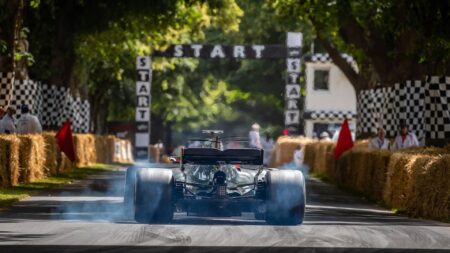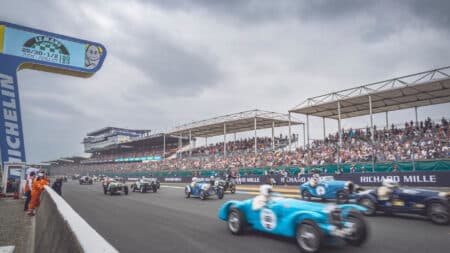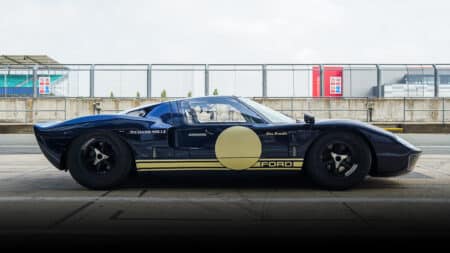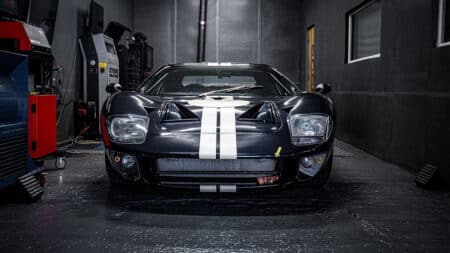Mercedes-powered cars have dominated the speed trap charts across this year’s Formula 1 calendar and the trend continued at Monza, where seven of the top 10 speeds in qualifying were lodged by Mercedes power units. Sergio Pérez was quickest of all, hitting 354.6kph before jumping on the anchors into the first chicane.

The car featured in this week’s classified spotlight was similarly capable of hitting big numbers in a straight line. The Arrows A21 competed throughout the 2000 season, driven by Jos Verstappen and Pedro de la Rosa. Unfortunately for them, quick speed trap figures have never been a guarantee of ultimate performance.

The reverse is also true. A lack of straight line speed does not preclude success, as so clearly evidenced by Red Bull’s recent dominance of the sport. The team’s Renault units did not generate the same power output as their German and Italian rivals, yet the overall package proved unbeatable.
Other teams – think Force India and Williams – have produced very efficient cars. This year’s VJM08 and FW37 both lack the outright downforce of the W06 but perform particularly well at low-downforce circuits where straightline speed and aerodynamic efficiency are more important. At Monza, Williams drivers Felipe Massa and Valtteri Bottas finished third and fourth with the Force India duo, Sergio Pérez and Nico Hülkenberg, sixth and seventh. Both sets of results are the team’s best this season.

Fifteen years ago, Monza also marked Arrows’ best performance of the season after Verstappen took fourth at the Italian temple of speed behind Michael Schumacher, Mika Häkkinen and Ralf Schumacher. It was the one of few highlights from a disappointing campaign. At the end of 17 rounds, Arrows lay seventh in the constructors table with seven points.
The A21 would’ve reached greater heights had it managed to finish more races. The reliability of modern grand prix cars make Arrows’ 2000 statistics all the more shocking. Between them, Verstappen and de la Rosa finished only 13 races. The striking orange and black machines failed to see the chequer on 21 occasions. Even this year’s McLaren, well known for its poor reliability, has a better finishing record.

Though less reliable than the MP4-30, whenever the Arrows A21 did last the distance, it often demonstrated impressive pace. In addition to Monza, the car’s streamlined form contributed to top six finishes at the Nürburgring, Montréal and Hockenheim, predominantly low-downforce circuits.
Leaving aside the car’s fragility, the A21 was a tidy package from a technical team headed by Mike Coughlan. As high nose structures became increasingly common across the front of the grid – improving airflow to the floor – Arrows retained a distinctively low-set nose. This feature contributed to its aerodynamic efficiency, but also marked it out as a one of the prettier shapes on the grid.
In-period, the A21 featured a Supertec V10. The brand was short lived in F1, but successful nonetheless. This example, one of Verstappen’s cars from 2000, has been converted to run a Brian Hart-designed unit, also 10 cylinders strong. Hart engines featured in Arrows cars between ’95 and ’99 (latterly under Yamaha and Arrows banners) so I suspect the alteration improves access to spares. Heritage F1 describe chassis 006 as “very quick, but forgiving” and notes its immaculate condition.
The car’s V10 is mated to an Arrows/Xtrac six-speed semi-automatic gearbox. Its shift times won’t compare with the double-clutch units currently raced, but unless you’re Lewis Hamilton, chassis 006 will feel more missile than car under heavy acceleration. Even Hamilton might be taken aback by its pace for Verstappen’s qualifying lap from 2000 would have put him eighth on the grid last weekend. If you are in the market for extreme track day thrills or desperate to enter the Boss GP Series, this is a car you should seriously consider.
Click here to visit this car’s classified page










